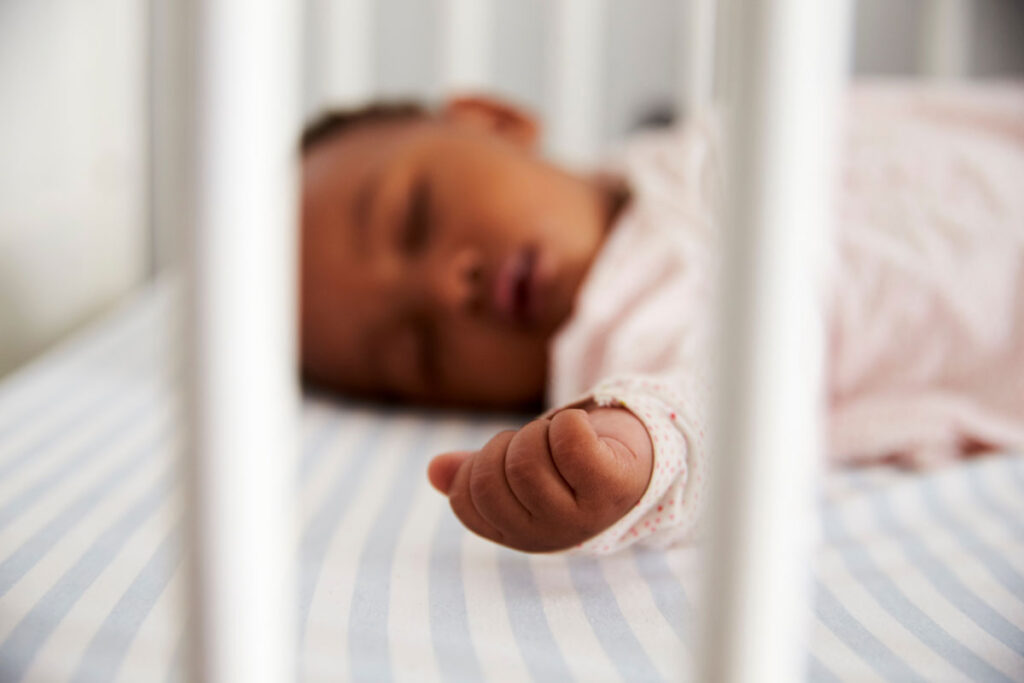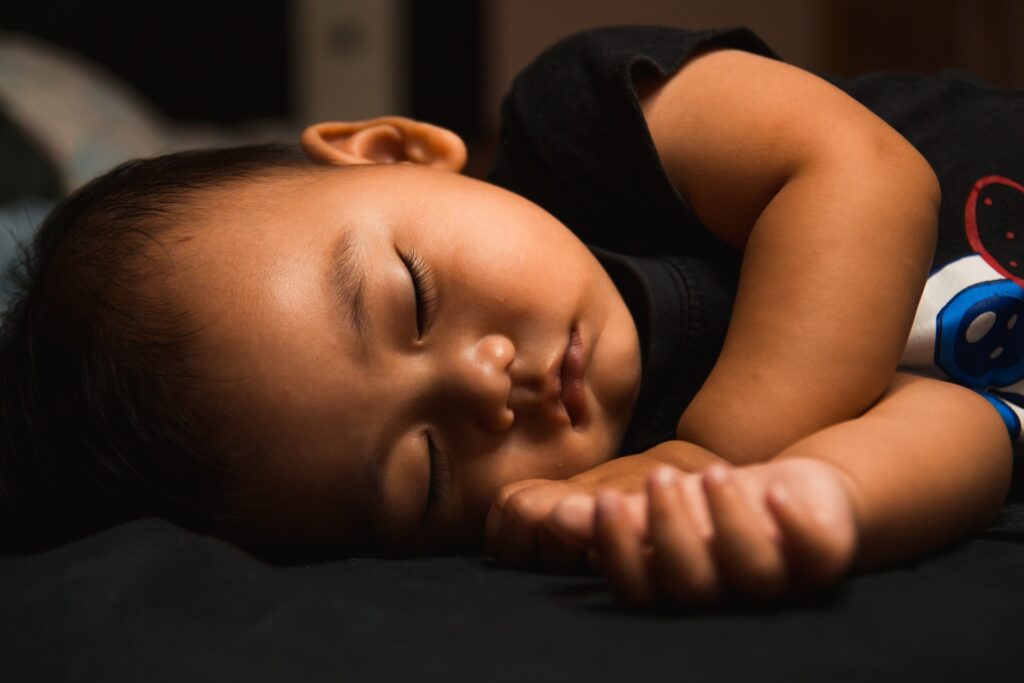Safe Sleep
Sudden unexpected infant death (SUID) is a term used to describe the sudden and unexpected death of a baby less than 1-year-old in which the cause was not obvious before investigation.

Understanding and Prevening SUIDS

The three most commonly reported types of SUID include the following:
- Sudden infant death syndrome (SIDS).
- Unknown cause.
- Accidental suffocation and strangulation in bed.
According to the Colorado Child Fatality Prevention System, SUIDS takes the lives of around 50 children under the age of one-year-old in Colorado each year. The first step to preventing SUIDS and other sleep-related deaths is to understand and utilize the most up-to-date, evidence-based recommendations for safe infant sleep.

Not Sure Where to Start?
In this handout provided by the National Institute for Children’s Health Quality, you’ll learn:
- The definition of SIDS and how to reduce the risk of sleep-related infant deaths
- How to create a safe sleep environment
- Strategies for promoting safe sleep messaging to health professionals, child care programs, and ultimately, parents and family members.
If Not You, Then Who?
We all play a role in making sure all children are valued, healthy and thriving. It is important for all parents, grandparents, relatives, friends, neighbors and early childhood professionals to have the tools they need to practice the ABCs of safe sleep during every nap, every night, and each time they care for a young child.
The safest place for your baby to sleep is in the room where you sleep, but not in your bed. Never nap on a couch or chair while holding your baby.
Lay your baby down on his or her back. Lying on the back helps your baby to easily draw in air by keeping the mouth and nose free of obstructions. This position also helps your baby to easily swallow anything that is spit up or coughed up during sleep.
Always put your baby down to sleep on a firm mattress in a safety-approved crib, bassinet or play yard that has no blankets, bumpers or stuffed animals. Instead of using a blanket to keep your baby warm, dress her in an age- and size-appropriate sleeper or sleep sack-type pajamas.
Tips for Talking about Safe Sleep
Discussing plans for your baby to sleep safely is non-negotiable. It is important that anyone caring for your baby, including grandparents, co-parents, family members, friends and child care providers, understand the latest safe sleep safety guidelines.
Leaving your baby to be cared for by someone else? Check out these questions from Colorado Shines to help you prepare to talk with any childcare provider about safe sleep:
- Can I see where my baby sleeps?
- Have you completed any training on safe sleep?
- How is my baby positioned when they sleep?
- Do you offer my baby a pacifier when he/she is being put down to sleep?
- How often do you check on sleeping infants?
- During tummy time, will someone be making sure my baby’s eyes are open?
- If my baby gets cold, do you use a blanket or change the temperature of the room?
- Can I see a copy of your safe sleep policies?
Did You Know?
Licensed child care providers must follow rules to make sure infants are safe. Click here to confirm your provider is licensed or to search for a licensed child care program.
- Black families are twice as likely as White families to have their babies die in the first year of life. In Ohio and Wisconsin, they are three times as likely. These statistics are more than numbers; they represent real families who suffer unimaginable loss. Learn more about applying an equity lens to safe sleep and breastfeeding efforts from the National Institute for Children’s Health Quality.
- Back sleeping will not cause a baby to choke—it protects against choking. Place all babies on the back for sleep unless the child has a signed doctor’s note that says not to. A healthy baby will naturally swallow or cough up fluids—it’s a reflex all people have in order to keep the airway clear. Thanks to their anatomy, a baby may be better able to clear fluids when sleeping on their back.
- Starting conversations about safe sleep in the first trimester gives families more time to ask questions and makes necessary preparations, such as getting a crib. It also gives health professionals time to respond to concerns and connect families with resources. This is important for all families, but especially for populations who may face unique social or cultural barriers.
- Babies usually begin to roll when they are 4-6 months old, which is also the age at which the chance of SIDS decreases. (Every baby is different. Some achieve this milestone as early as three months.) While the risk of SIDS drops a lot after six months, it does not go away completely until 12 months of age.
- Co-sleeping includes both surface sharing and room sharing! Although it is a common term, it is also a confusing one. Surface sharing is when the parent or caregiver shares a bed, couch or any sleep surface with the baby, which is not recommended. Room sharing is when the baby sleeps on their own bed/crib/bassinet in the same room where the parent sleeps. The American Academy of Pediatrics (AAP) recommends room-sharing without surface sharing or bedsharing. Room-sharing may lower the baby’s risk of SIDS and other sleep-related causes of death.

Additional Safe Sleep Resources
Visit the Center for Disease Control and Prevention to learn more about steps you can take to create a safe sleep area for baby.
- The Safe Sleep Academy provides helpful tips for putting your baby to sleep safely, soothing fussy babies and making your entire home a safe place for baby.
- Cribs for Kids® Partners in Colorado provide safe sleep education for parents and caregivers, and many provide portable cribs to those who qualify. Partners may have a different set of requirements for receiving a portable crib and some partners only provide safe sleep education, but not cribs; however, they may know of other programs that are available in your area that can assist you.
- More information on safe sleep can also be found on the Colorado Department of Public Health and Environment and Children’s Hospital Colorado websites.
Together, we can ensure Colorado reduces the number of preventable infant deaths through parent support programs, caregiver education and increased public awareness.